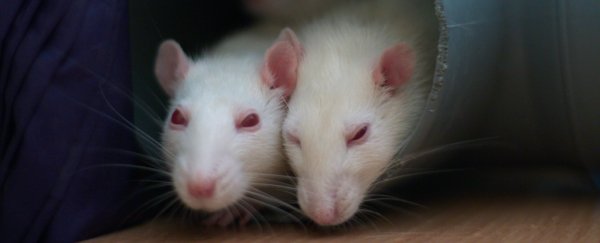Rats born with an inherited condition that leads to blindness have had their eyesight improved, thanks to a new gene editing technique.
The condition, called retinitis pigmentosa, is also a common cause of vision loss in humans and right now, there is no cure. This is the first time that scientists have shown that they can effectively 'erase' some of its damage from the genome - in rats at least - and that's a pretty big deal.
The gene editing technique is known as CRISPR/Cas9, and if you haven't heard of it already, you soon will. It's a set of two enzymes traditionally used by bacteria that pretty much work like a cut/copy function for genomes. Because of this, it has the potential to relatively quickly and easily remove harmful genes from human DNA, as well as add new and improved features.
As you can imagine, CRISPR/Cas9 is as controversial as it is exciting, with the very real potential that it could lead to things like designer babies.
But if a current bid is approved, within weeks, we could see the first human embryos have their genes edited using the technique in the UK, so it's definitely not going away any time soon. Chinese scientists have already admitted using the technique on human embryos.
The new demonstration by scientists at the Cedars-Sinai Medical Centre that CRISPR/Cas9 can improve vision in rodents destined to go blind adds yet another reason for why the technique is going to be highly sought after in future.
"This is the first time CRISPR/Cas9 gene editing has been used to prevent vision loss in a living animal," said one of the team, Clive Svendsen. "It is a truly remarkable result and paves the way for more exciting studies and translation to the clinic in the future."
In order to improve the rats' vision, Svendsen and his colleagues designed a CRISPR/Cas9 system that would remove a mutated gene that causes photoreceptor cell loss in the eye from the rodent genome.
They injected this system into young rats born with a type of retinitis pigmentosa that's known to affect this gene, and after a single injection, the rats were able to see better than control animals. (The team measured this by looking at how the rats turned their heads in response to stripes of varying degrees of brightness.)
The researchers will now continue to tweak their CRISPR/Cas9 system to further improve the rats' vision further. But what's really exciting is the implications for future human use.
"Our data show that with further development, it may be possible to use this gene-editing technique to treat inherited retinitis pigmentosa in patients," said Shaomei Wang, lead author on the study, which has been published in Molecular Therapy.
Hold on tight, kids, we're on the verge of a brave new world of genetic editing, and if early indications are anything to go by, it's going to be one hell of a ride.
